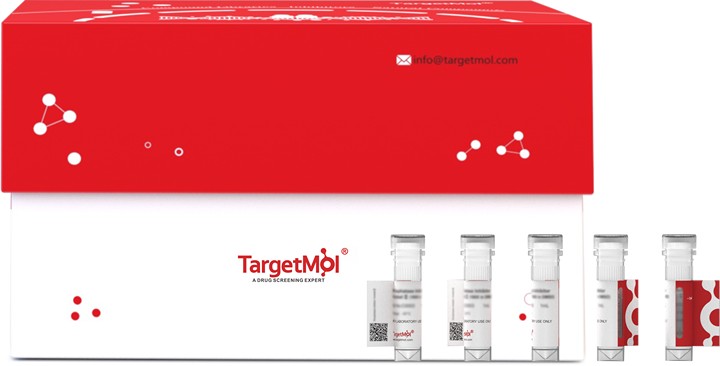Shopping Cart
Remove All Your shopping cart is currently empty
Your shopping cart is currently empty
Hemopexin (HPX) serves as scavenger and transporter of toxic plasma heme to the liver. HPX is formed by two four-bladed beta-propeller domains, resembling two thick disks that lock together at a 90 degrees angle. The heme is bound between the two beta-propeller domains in a pocket formed by the interdomain linker peptide.HPX, acting not only as a heme carrier but also displaying transient heme-based ligand binding and (pseudo-)enzymatic properties, could be considered a 'chronosteric' heme-protein.

| Pack Size | Price | USA Warehouse | Global Warehouse | Quantity |
|---|---|---|---|---|
| 5 μg | $58 | 7-10 days | 7-10 days | |
| 10 μg | $92 | 7-10 days | 7-10 days | |
| 20 μg | $148 | 7-10 days | 7-10 days | |
| 50 μg | $289 | 7-10 days | 7-10 days | |
| 100 μg | $487 | 7-10 days | 7-10 days | |
| 200 μg | $883 | 7-10 days | 7-10 days | |
| 500 μg | $1,950 | 7-10 days | 7-10 days |
| Biological Activity | Activity has not been tested. It is theoretically active, but we cannot guarantee it. If you require protein activity, we recommend choosing the eukaryotic expression version first. |
| Description | Hemopexin (HPX) serves as scavenger and transporter of toxic plasma heme to the liver. HPX is formed by two four-bladed beta-propeller domains, resembling two thick disks that lock together at a 90 degrees angle. The heme is bound between the two beta-propeller domains in a pocket formed by the interdomain linker peptide.HPX, acting not only as a heme carrier but also displaying transient heme-based ligand binding and (pseudo-)enzymatic properties, could be considered a 'chronosteric' heme-protein. |
| Species | Cynomolgus |
| Expression System | HEK293 Cells |
| Tag | C-His |
| Accession Number | A0A2K5WVL1 |
| Synonyms | Hpxn,Hpx,Hemopexin |
| Construction | Asn24-Tyr462 |
| Protein Purity | > 95% as determined by Tris-Bis PAGE; > 95% as determined by HPLC |
| Molecular Weight | 50.30 kDa (predicted). Due to glycosylation, the protein migrates to 60-80 kDa based on Tris-Bis PAGE result. |
| Endotoxin | < 1 EU/μg by the LAL method. |
| Formulation | Lyophilized from a solution filtered through a 0.22 μm filter, containing 20 mM MES, 150 mM NaCl (pH 6.0). Typically, 8% trehalose is incorporated as a protective agent before lyophilization. |
| Reconstitution | Reconstitute the lyophilized protein in 20mM MES, 150mM NaCl (pH 6.0). The product concentration should not be less than 100 μg/ml. Before opening, centrifuge the tube to collect powder at the bottom. After adding the reconstitution buffer, avoid vortexing or pipetting for mixing. |
| Stability & Storage | It is recommended to store recombinant proteins at -20°C to -80°C for future use. Lyophilized powders can be stably stored for over 12 months, while liquid products can be stored for 6-12 months at -80°C. For reconstituted protein solutions, the solution can be stored at -20°C to -80°C for at least 3 months. Please avoid multiple freeze-thaw cycles and store products in aliquots. |
| Shipping | In general, Lyophilized powders are shipping with blue ice. |
| Research Background | Hemopexin (HPX) serves as scavenger and transporter of toxic plasma heme to the liver. HPX is formed by two four-bladed beta-propeller domains, resembling two thick disks that lock together at a 90 degrees angle. The heme is bound between the two beta-propeller domains in a pocket formed by the interdomain linker peptide.HPX, acting not only as a heme carrier but also displaying transient heme-based ligand binding and (pseudo-)enzymatic properties, could be considered a 'chronosteric' heme-protein. |
| Size | Quantity | Unit Price | Amount | Operation |
|---|

Copyright © 2015-2025 TargetMol Chemicals Inc. All Rights Reserved.